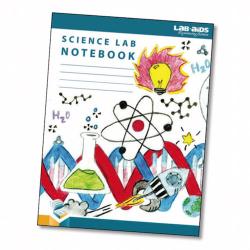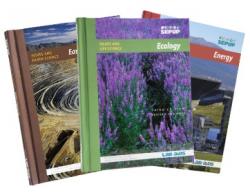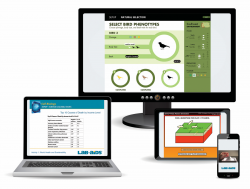Issue-oriented science forms the foundation of Issues and Science and it is the only secondary science program to do so. These big ideas make the content relevant to students' lives and are anchored in real-world events. They connect the why for students, "Why does this matter?"
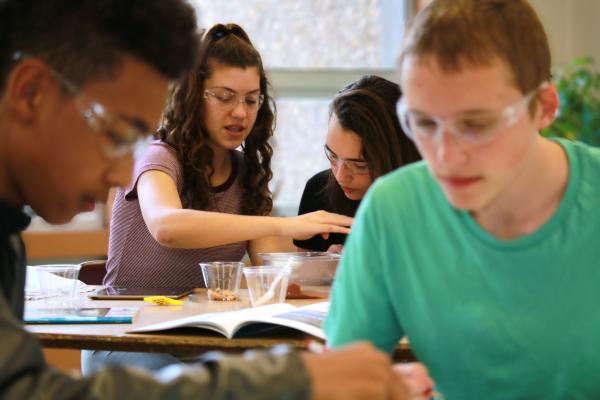
EdReports Review
Issues and Science was developed at the Lawrence Hall of Science in response to the need for high quality, three dimensional, phenomena driven curriculum. It has earned high scores from EdReports for middle school science curriculum.
It's not a textbook. It's not a kit. It's a program.
Each program component references the others to form a cohesive learning system for teachers and students.
Take a Look inside
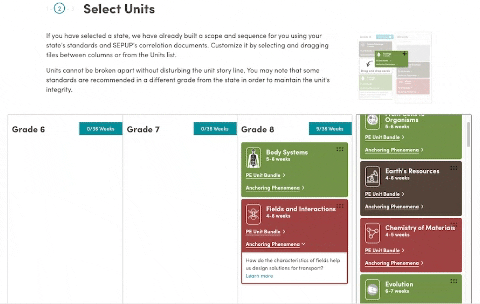
Course structure
A full year of our middle school science curriculum generally consists of 5-6 units that can be taught in almost any order, based on your school's scope and sequence. Each unit then is structured with several activities, sequenced intentionally to engage the students, build on the storyline, and increase the level of sophistication as the unit progresses.
program supports
Literacy
Embedded strategies help teachers explore students' thinking and give students multiple opportunities to confront their preconceptions.
Assessment
Integrated into the programs the SEPUP assessment system sets up ways to collect evidence on student learning and improve performance.
Differentiation
An intentionally flexible approach to all program activity types help accomplish our goal that all students achieve scientific literacy.
Our scores on science standardized tests have done nothing but increase over time since implementation.
FREQUENTLY ASKED QUESTIONS
Do you offer year-round middle school science programs?
Yes. We provide full-year middle school science curriculum. Generally, a full year is comprised of 5 to 6 units. Depending on your school’s scope and sequence, these units may be taught in just about any order. Alternatively, just one or two may be purchased and taught as stand alone units. Each unit is complete with science activities for middle school students, designed to engage and inspire students in your classroom. As your school year progresses, these activities will increase in sophistication giving students exciting, informative ways to learn about science.
How are your programs developed?
Our science curriculum is developed by research-based institutions such as the Lawrence Hall of Science, EDC, and Oceans of Data Institute. Development is based on educational studies around how students best learn science. Our developers are also involved in countless nationwide efforts to improve science education, including continuing work with implementation of NGSS, assessment and the NGSS, and the incorporation of engineering and Big Data into general science.
Our goal is to provide educators with the tools to help, inspire, and teach students the practices of middle school science and high school science so that they can become science literate individuals.
Do equipment packages come included for middle school science teachers?
Yes, we include everything you need to teach in an organized equipment package that is easy to access and use daily. Each unit in Issues and Science includes a set of sturdy drawers containing the following:
- Field-tested, high-quality middle school science labs materials
- Reusable equipment for up to 32 students to be used for middle school science investigations
- Consumable materials for use by 160 middle school students
- Small containers for group exercises and science experiments for middle school
- Durable carts with wheel attachments for easy use and transportation around the classroom
Does Lab-Aids have a team of customer service representatives available to answer questions about your middle school science curriculum?
Our curriculum specialists are available and ready to answer any questions you might have about Lab-Aids middle and high school science curriculum. Unlike generic customer service reps, most of our curriculum specialists and product developers have spent years as educators. The Lab-Aids team is personally familiar with the challenges that you as a teacher or administrator face. From specific questions about changing your middle school science lesson plans to broader questions about Lab-Aids, we’re here to help.
Do Lab-Aids middle school programs help with student literacy?
Our proven programs include much more than just lesson plans and science investigation kits for middle school students - we provide natural opportunities to develop students' language and verbal skills. All middle and high school science curriculum embed literacy support directly into the program.
Can you give me a brief overview of the Lab-Aids middle school science curriculum?
Lab-Aids’ middle school programs aren’t just textbooks or science experiment kits for middle school learning, they are all-encompassing programs that are field-tested in real classroom situations. Lab-Aids middle school programs provide educators with all of the tools that they need to do what means most to them: teaching! Our range of solutions include:
- All equipment necessary to teach your science classes
- Middle school science books that wrap content and real-world context around investigations
- Online and remote resources to support and enhance the curriculum
- Organized drawers for storage and easy access to science materials
- Signature items only found with Lab-Aids programs
- Storage carts
- Listed drawer contents
What components make up the Lab-Aids middle school program?
Our middle school science curriculum is not just a textbook with some labs and simulations. Each unit includes:
- Hard-bound printed Student Book (optional if accessing it digitally)
- Organized equipment drawers with all the materials needs for every embedded investigation
- Online access for students which includes:
- Student Book in English and Spanish
- All student sheets and visual aids in English and Spanish
- Simulations for activities that cannot be done physically, due to needs around remote teaching or specific science concepts (ie: space models, plate movement, etc)
- LABsent activities and videos for students who have been absent from a classroom investigation.
- Supplemental resources for students
- Online access for teachers which includes:
- all of the above Student access
- Teacher Edition (day to day planning and instruction)
- Teacher Resources (overall program support including assessment, teaching the NGSS, differentiated instruction, etc)
- Remote Learning Activities in Word or Google docs for every single lesson
- editable PowerPoint slides for each activity
- the SEPUP Assessment System and editable Item Banks
- Supplemental resources for teachers
- Printed Teacher Edition and Teacher Resource binders optionally available
Do you offer solutions for educators that teach across multiple science disciplines?
Yes, we certainly do. If you are an educator that teaches across multiple science disciplines you may mix and match units from Earth, Life, or Physical Science. We can provide a suggested scope and sequence for either discipline-based or integrated instruction, depending on your state's standards.
Is it possible to try the Lab-Aids program before making a purchase?
Yes, it is. We absolutely understand that many teachers and schools need to determine whether our programs are a good fit for their district. We recommend that you contact a curriculum specialist using this form. When filling out the form, note that you are involved in a curriculum adoption (or simply request a sample if you're in the early stages of the process).
What middle school science subjects do you offer as part of the Lab-Aids curriculum?
Middle school science subjects include the following and may be purchased as individual units if needed:
Middle School Earth Science – This course guides students as they discover and explore concepts such as erosion, deposition, plate tectonics, and how weather and climate affect our everyday lives. To further scientific knowledge, students engage in the work of real engineers and scientists.
Middle School Physical Science – In this course, students learn how technology and science work together to make community and life decisions. Comprised of several units, students will make decisions on products based on their environmental impact and product life cycles.
Middle School Life Science – In this course, students tackle relevant issues like genetic testing, health risks, and the impact of introduced species. They also collect and analyze data, explore scientific phenomena, and apply their newfound knowledge to decision-making issues brought up in each unit.
Does Lab-Aids offer any kind of educator support?
Absolutely. If you are interested in professional learning, we offer hands-on, engaging sessions to help educators develop new strategies and acquire new information. From our getting-started days and conference workshops to implementation training and the Summer Academy, Lab-Aids is here to support our schools and educators.
If you’re looking to attend Lab-Aids conferences and workshops, we recommend you refer to the menu for Training, then Events page for a list of upcoming events.
Do you offer a warranty on your middle school science textbooks?
Yes – Lab-Aids, Inc. warrants all Casebound Textbooks against manufacturing defects in material or workmanship for 5 years under “normal and reasonable” classroom use, beginning from the time of your original purchase. We also warrant that our middle school science books meet and/or exceed MSST standards and specs developed by the National Association of State Textbook Administrators, in consultation with the Association of American Publishers and the Book Manufacturers’ Institute. Please visit https://store.lab-aids.com/about-us/easy-ordering for more information about defects and/or damages.
What is the best way to order middle school science Lab-Aids products?
There are several ways to get started on your Lab-Aids order, depending on your preference. If you are located in the U.S., please call: 631-737-1133. We are open Mon- Fri 9:00 A.M. to 5:00 P.M. ET. Be sure to ask for customer service. You may order by email at customercare@lab-aids.com. To order by mail, please send your authorized purchase order to LAB-AIDS, Inc., 17 Colt Court, Ronkonkoma, NY 11779.
Time is valuable
Several recent studies on teacher workload showed that lesson planning and grading made the biggest negative impact on job satisfaction. The average teacher spends 12 hours working evenings and weekends - most of that time is spent grading or planning.
Several recent studies on teacher workload showed that secondary teachers spend about a third of their professional time planning. Additionally, the average teacher spends 12 hours working evenings and weekends - most of that time is spent grading or creating lessons.

